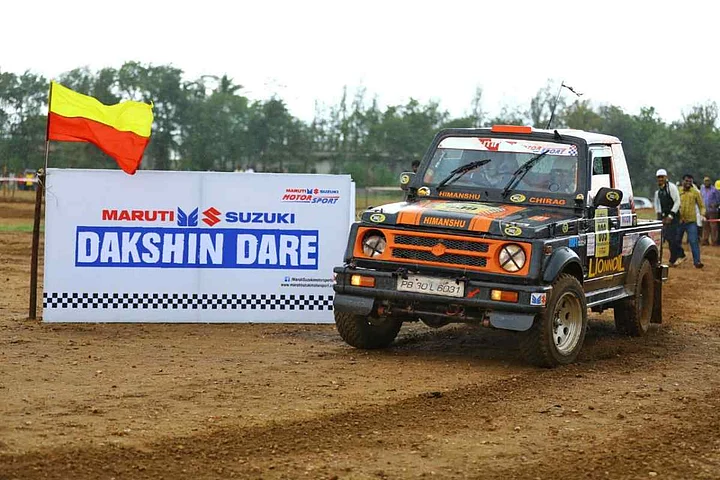The Maruti Gypsy is one vehicle that has attained almost cult status in India, primarily because it was the staple mode of transport among the Indian armed forces. Its off-road capabilities are legendary and has earned it quite a fan following.
The bad news: The Maruti Suzuki Gypsy as we know it, will cease to exist after March 2019. Production of the Gypsy will stop in March 2019 as it will not be able to meet the new crash test norms and regulations that will come into force in April 2019.
Airbags and ABS will become mandatory, and the Maruti Gypsy is not capable of being fitted with this equipment.
Bookings will stop by 1 December. The Gypsy is anyway being made to order and the company produces it in batches of about 100 orders, on full payment of the Rs 7 lakh odd that it costs ex-showroom.

Barebones Off-Roader
The Maruti Suzuki Gypsy is one of the few vehicles that has remained virtually unchanged except for an engine and minor wheel track upgrades over the years. It first came to the Indian market in early 1986 (official launch was December 1985).
The body shell and length of the Gypsy has remained untouched since then. The vehicle continues to have a rudimentary (yet rugged) leaf-spring suspension on the front and rear non-independent axles. It has no power steering, air-conditioning or any creature comforts to speak of, although many got these added aftermarket.
Here’s a quick run down of the relatively minor updates the Gypsy received over the years.

Maruti Gypsy MG410 (1985-1993)
The first model Gypsy was powered by a four-cylinder, carburetted 1-litre (970 cc) petrol motor that put out about 45 bhp of power and 90 Nm of torque. It came with a four-speed transmission and part-time four-wheel drive, with a low-range gearbox.
The front hubs had Aisin manual free-wheeling hubs, which helped in fuel economy by reducing drag on the transmission when driving on tarred roads.

Maruti Gypsy MG410W (1993-1999)
In 1993, owing to the pretty bumpy ride quality and propensity to overturn that the narrow-wheel track Gypsy had, Maruti widened the track (the distance between the wheels on an axle) by 90 mm or so. By doing so, the company managed to reduce the centre-of-gravity of the Gypsy.
The Aisin free-wheeling hubs were removed for good and the wheels now came out of the body line. The company added fender flares to compensate for that. The engine remained unchanged except for the addition of a catalytic converter in later models.

Maruti Gypsy King MG413W (1996-2000)
In mid 1996, after many buyers had been asking for more power, Maruti fitted the 1.3 litre petrol engine from the Maruti Esteem into the Gypsy. Along with it came a 5-speed manual transmission, which suddenly gave the Gypsy a higher top-speed. This was the carburetted version of the engine that put out 60 bhp of power and 99 Nm of torque.
Cosmetically, it got a plastic grille, new headlamp shrouds and some decals, but the rest remained the same. The bonnet got a slight hump to accommodate the larger engine.

Maruti Gypsy King MG413W (2000-Present)
With Euro-2 emission norms coming into the country, Maruti added fuel-injection to the Maruti Gypsy engine in place of the carburettor. Power went up to 80 bhp and torque was 103 Nm on the Gypsy. This spec has continued till date, with hardly any updates other than to the emission systems over the years. It also got booster-assisted brakes finally (the earlier version were non-assisted, with discs in front and drums at the rear).
However, it won’t carry on beyond March 2019. There were rumours of it being replaced by the Suzuki Jimny, but they haven’t been confirmed yet.
(At The Quint, we are answerable only to our audience. Play an active role in shaping our journalism by becoming a member. Because the truth is worth it.)
